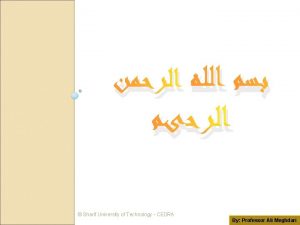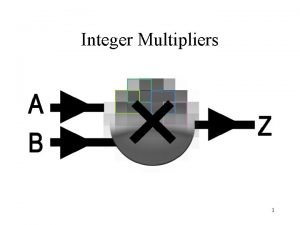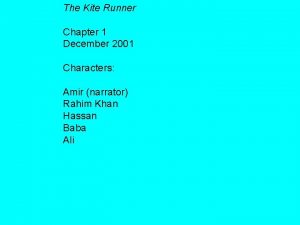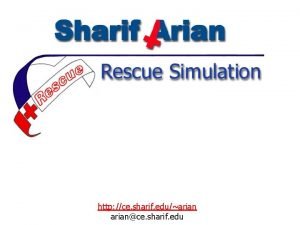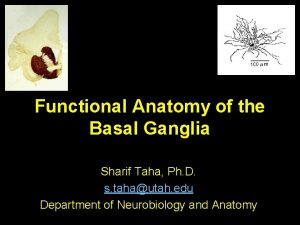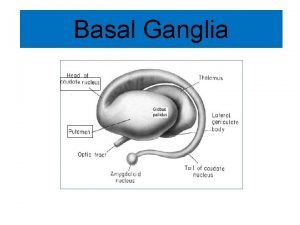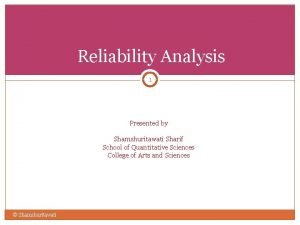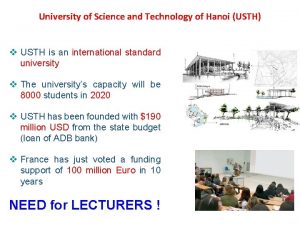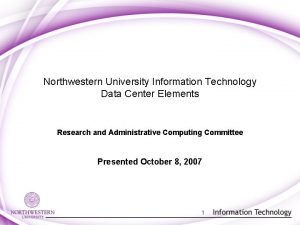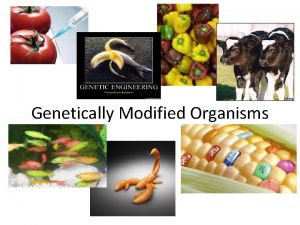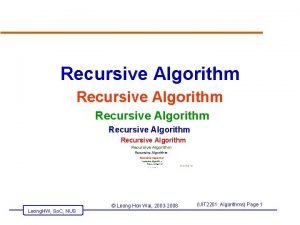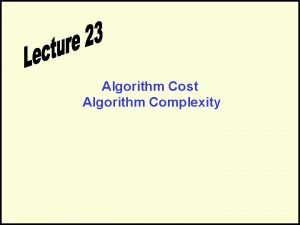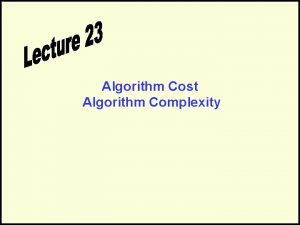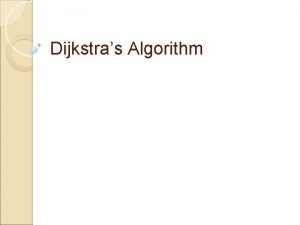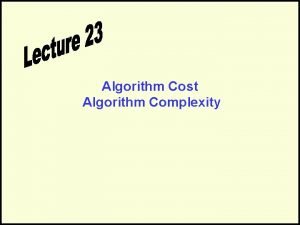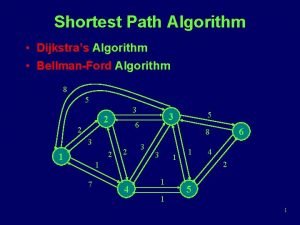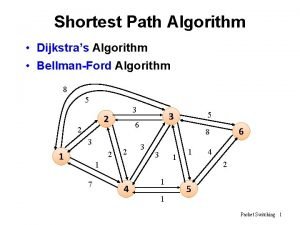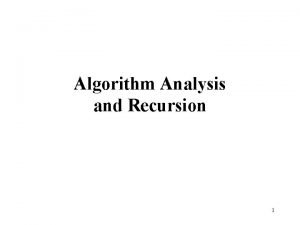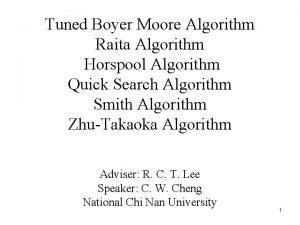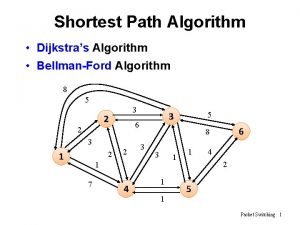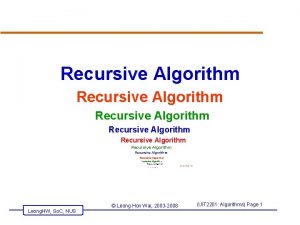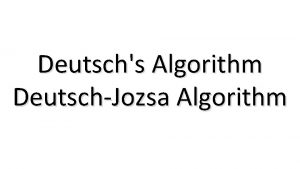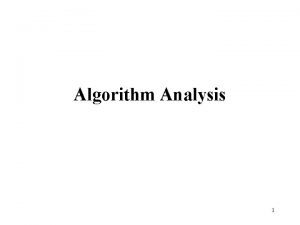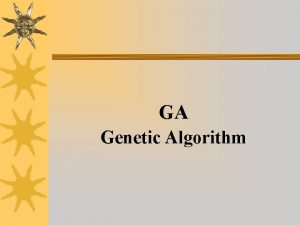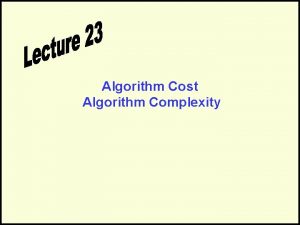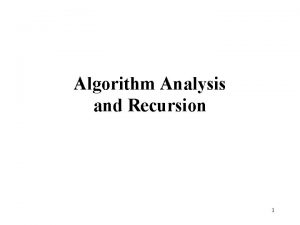Sharif University of Technology A modified algorithm to



























- Slides: 27

Sharif University of Technology A modified algorithm to obtain Translation, Rotation & Scale invariant Zernike Moment shape Descriptors G. R. Amayeh Dr. S. Kasaei A. R. Tavakkoli

Introduction o o Shape is one of the most important features to human for visual distinguishing system. Shape Descriptors n Contour-Base o o n Using contour information Neglect image details Region-Base o Using region information 2

Shape Descriptors Fig. 1: Same regions. Fig. 2: Same contours. 3

Zernike & Pseudo-Zernike Moments of Order n, with mrepetition: (1) n Zernike Moment’s Basis Function (2) (3) 4

Zernike & Pseudo-Zernike Moments o Zernike Moment Radial Polynomials: (4) o Pseudo-Zernike Radial Polynomials: (5) 5

A Cross Section of Radial Polynomials of ZM & Ps. ZM Fig. 3 : ZM (blue) & Ps. ZM (red) of 4 -order with repetition 0. Fig. 5 : ZM (blue) & Ps. ZM (red) of 5 -order with repetition 1. Fig. 4 : ZM (blue) & Ps. ZM (red) of 6 -order with repetition 4. Fig. 6 : ZM (blue) & Ps. ZM (red) of 7 -order with repetition 3. 6

3 -D Illustration of Radial Polynomials of ZM & Ps. ZM Fig. 7 : Radial polynomial of ZM of 7 -order with repetition 1. Fig. 8 : Radial polynomial of Ps. ZM of 7 -order with repetition 1. 7

Zernike Moments Properties o Invariance Properties: n Zernike Moments are Rotation Invariant o o Rotation changes only moment’s phase. Variance Properties: n Zernike Moments are Sensitive to Translation & Scaling. 8

Achieving Invariant Properties o What is needed in segmentation problem? n o Moments need to be invariant to rotation, scale and translation. Solution to achieve invariant properties n n n Normalization method. Improved Zernike Moments without Normalization (IZM). Proposed Method. 9

Normalization Method o Algorithm: n Translate image’s center of mass to origin. n Scale image: 10

Normalization Method Fig. 9 : From left to right, Original, Translated, & Scaled images (b=1800). 11

Normalization Method Fig. 10 : From left to right, original image & normalized images with different b s. 12

Normalization Method Drawbacks o Interpolation Errors: n n Down sampling image leads to loss of data. Up sampling image adds wrong information to image. 13

Improved Zernike Moments without Normalization o Algorithm: n n Translate image’s center of mass to origin. Finding the smallest surrounding circle and computing ZMs for this circle. Fig. 11 : Images & fitted circles. n Normalize moments: (8) 14

Drawbacks o Increased Quantization Error. n Since the SSC of images have a small number of pixels, image’s resolution is low and this causes more QE. 15

Proposed Method o Algorithm: n n Computing a Grid Map. Performing translation and scale on the map indexes. Fig. 12: Mapping. 16

Proposed Method n Translate origin of coordination system to the center of mass (9) Fig(13). Translation of Coordination Origin. 17

Proposed Method n Scale coordination system (10) 18

Proposed Method o o Computing Zernike Moment in new coordinate for where. We can show that the moments of in the new coordinate system are equal to the moments of in the old coordinate system. 19

Proposed Method b=800 b=1200 b=1800 b=2500 Fig. 15 : From left to right, original image & normalized images with different b s. 20

Proposed Method o Special case Fig. 16 : Original image. Fig. 17 : Zernike moments by proposed method (b=2550) & IZM (Improved ZM with out normalization ). 21

Experimental Results Fig. 16 : Original image & 70% scaled image. Fig. 17 : Error of Zernike moments between original image & scaled image. 22

Experimental Results Fig. 18 : Original image & 55 degree rotated image. Fig. 19 : Error of Zernike moments between original image & rotated image. 23

Experimental Results Fig. 20 : Original image & 120% scaled image. Fig. 21 : Error of Zernike moments between original & scaled images. 24

Experimental Results Fig. 21 : Original image & 40 degree rotated image. Fig. 23 : Error of Zernike moments between original image & rotated image. 25

Conclusions o o Principle of our method is same as the Normalization method. Does not resize the original image. n o o o No Interpolation Error. Reduces the quantization error. (using beta parameter) Trade off Between QE and power of distinguishing. Has all the benefits of both pervious methods. 26

The End
 Sharif university of technology
Sharif university of technology Nawaz sharif agriculture university multan
Nawaz sharif agriculture university multan Multiplier table in mact cases
Multiplier table in mact cases Aflatoon kite runner
Aflatoon kite runner Mail.ce.sharif
Mail.ce.sharif Leila sharif
Leila sharif Trove
Trove Edu.sharif.edu
Edu.sharif.edu My.edu.sharif
My.edu.sharif Kawasan penentangan sharif masahor
Kawasan penentangan sharif masahor Sharif masahor peristiwa penentangan
Sharif masahor peristiwa penentangan Hossein sameti
Hossein sameti Sharif
Sharif Peristiwa penentangan sharif masahor
Peristiwa penentangan sharif masahor Sharif taha
Sharif taha Behjat sharif
Behjat sharif Lentiform nucleus function
Lentiform nucleus function Ayan sharif
Ayan sharif Andy field
Andy field Iman sharif md
Iman sharif md A* algorithm and ao* algorithm
A* algorithm and ao* algorithm Prof. slim codeforces
Prof. slim codeforces Outlook hust
Outlook hust Ulsan university of science and technology
Ulsan university of science and technology Science technology university yemen
Science technology university yemen Northwestern mailroom
Northwestern mailroom Jordan university of science and technology
Jordan university of science and technology Jordan university of science and technology
Jordan university of science and technology
